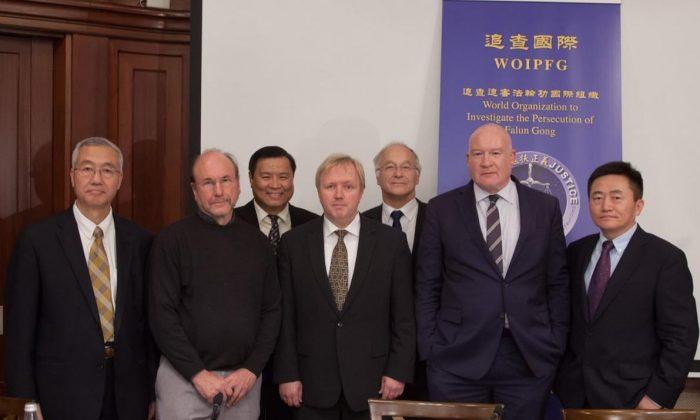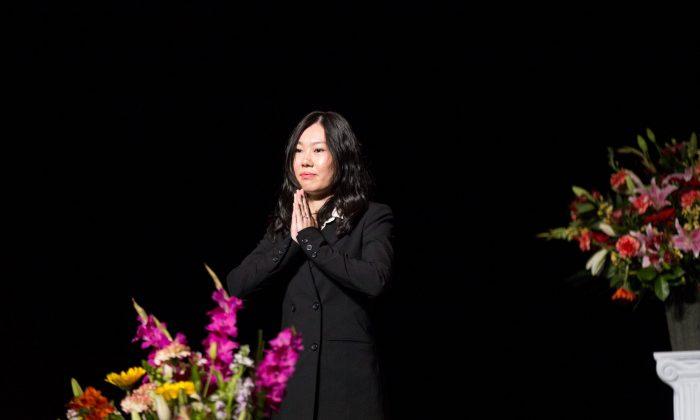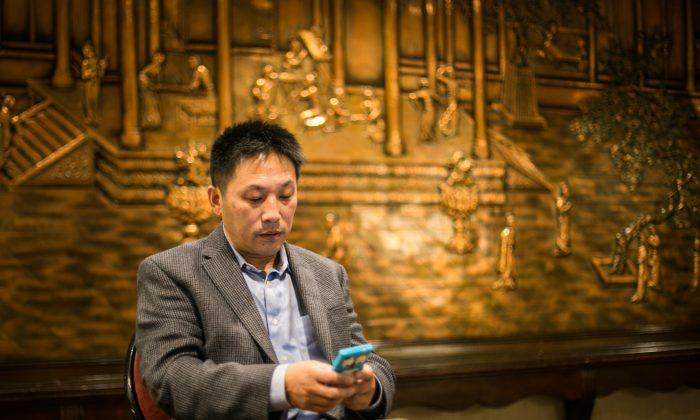KEELUNG, Taiwan—About an hour and a half north of Taiwan’s capital sits Keelung, (pronounced, and otherwise spelt ‘Jilong’), an unremarkable coastal city with drab weather and several tourists spots. About an hour from Keelung is Jiufen, an old gold town which broke down in the late 60s, and recovered thirty years later to become the buzzing tourist hub it is today.
Keelung flashes its tourist attractions around like a proverbial wristwatch, whereas Jiufen’s are hidden away amongst crooked alleys and steep cobblestone steps on a former gold mountain.
For example, every second bus in Keelung advertises the city’s half-a-dozen tourist attractions with cute pictures on each side. There’s the happy-go-lucky, anthropomorphic bamboo shoot (a well-known eat in the city), the smiling man with the fish (reference to a tourist/fishing spot called ‘Badouzi’), a set of large temple gates (a large park, called Zhongzheng, has these), a statue of Bodhisattva Guanyin (a Buddhist figure which the city has taken as the equivalent of a patron saint), and, finally, a picture of a chicken next to a cage. Following the pattern, one would expect that these last two symbols were advertising the existence of a battery farm somewhere on the outskirts of the city, but it is not so. This is a kind of play on words. The characters for chicken and cage are pronounced ‘ji’ and ‘long’ in Chinese, the same sound as ‘Jilong’, the name of the city. This last flourish is the first taste of Keelung’s unabashed kitsch.
Keelung flashes its tourist attractions around like a proverbial wristwatch, whereas Jiufen’s are hidden away amongst crooked alleys and steep cobblestone steps on a former gold mountain.
For example, every second bus in Keelung advertises the city’s half-a-dozen tourist attractions with cute pictures on each side. There’s the happy-go-lucky, anthropomorphic bamboo shoot (a well-known eat in the city), the smiling man with the fish (reference to a tourist/fishing spot called ‘Badouzi’), a set of large temple gates (a large park, called Zhongzheng, has these), a statue of Bodhisattva Guanyin (a Buddhist figure which the city has taken as the equivalent of a patron saint), and, finally, a picture of a chicken next to a cage. Following the pattern, one would expect that these last two symbols were advertising the existence of a battery farm somewhere on the outskirts of the city, but it is not so. This is a kind of play on words. The characters for chicken and cage are pronounced ‘ji’ and ‘long’ in Chinese, the same sound as ‘Jilong’, the name of the city. This last flourish is the first taste of Keelung’s unabashed kitsch.
Two others are its imitation Hollywood-style lettering on the small hill outside the city centre—the letters K E E L U N G are large, white, obvious, “funny” according to someone raised there, and perplexing—and a miniature statue of liberty, covered with dust, on the top of a building near the city centre. The first is presumably a government initiative for notability purposes, while the second is a private venture, and no explanation as to its presence is available. “The undertone,” says the former resident I spoke to about the two oddities, “is a city hungry for attention… too hungry, actually.”
Keelung is also very grey and rainy.
Moving through the city, one is sure to run into the Miaokou night market (literally ‘temple mouth’, since its proximity to the Dianji Temple), and find themselves amidst a world of foods, flavours, and odd English renditions of meal titles such as “Black tea with foam,” “Salty porridge/squid”, and “Nutritious sandwich.” There is no shortage of food of any type on offer in the bustling marketplace, which has become a common stop for travelers, and an obvious regular for locals. I skipped the nutritious sandwich and instead ordered an oyster omelet.
Taking the bus advertisement as a rough guide to the must-sees, the next stop was Badouzi, about a 20 minute bus trip followed by 15 minute walk. Badouzi is a small, mainly fishing point, with a jetty, rocks, walkway, and cliff faces. The official tourism website advises that one can enjoy the beautiful landscape and observe the birds and butterflies, while the seashore “presents all kinds of abrasion terrain and grotesque rock,” and care must be taken walking along the cliff.
A travel business nearby earns its crust by leading groups, from the several thousand daily visitors in peak season and during holidays, around the rock areas, and pointing out the mystifying formations apparently made by the wind and rain alone, including realistic looking faces, butterflies, and pigs feet. After some of the more cringe-worthy embellishments of the town, this secret-images-in-rock-formations comes closest to any hint of mystery in Keelung, and therefore serves as a useful segue into its northwestern cousin, Jiufen, which is swathed in it.
Jiufen the Hidden, the Bustling
Jiufen got its name back in the Qing dynasty. Nine families lived there, and when ordering shipments it was always ‘nine portions’ (in Mandarin, “Jiufen”). It was no more than a small village until around the turn of the 1800s, when gold was discovered. The village quickly became a bustling cosmopolitan town under Japanese rule, all the way up to the 1960s. Then, it dwindled and became nearly dormant for close to thirty years.In 1989 a Taiwanese film called The City of Sadness was shot in Jiufen. It was the first to talk openly about atrocities the Japanese had visited on Taiwanese during their occupation, and was a major hit on the island and abroad. It led to a surge of renewed interest in the sleepy mountain village. By then, too, since housing prices had dropped over the years, the bohemian crowd came to inhabit the area. When the tourists began to flock in, the bohemians started opening bed and breakfasts.
From this time on, Jiufen began to take the shape it has today: a maze of winding streets with food vendors on either side selling a multifarious variety of foods and crafts, several key lookout points, some nice restaurants and cafes, and hundreds of tourists wandering around among it all.
Some of foods on offer were first invented in Jiufen, and while they have now spread around Taiwan, people still say the best can only be found here. There are, for example, the ‘red meat circles’, which are made from a kind of glutinous, transparent rice filled with meat marinated in local sauces. There is also a kind of desert called ‘Yu yuan,’ difficult to describe but warm and deliciousness warrant the attempt.
The raw products for Yuyuan include flours, several kinds of sweet potatoes, and a variety of beans. The sweet potato is processed into a kind of spongy dough, rolled into balls which are added to a mildly sweet, thin syrup with cooked red and green beans added at the end. The result is a savory, warm, and comforting dish. If that description is inadequate, the dozens of people lining up to buy their own is proof enough that it tastes excellent.
Jiufen is also frequented by a distinctly younger crowd, which can be explained by perhaps the last piece of its popular history. In 2001, the famous Japanese animator Hayao Miyazaki visited the hamlet; he was swept away by what he saw. The endless lines of trinkets, round-shaped foods, hanging things, dangling jewels, cobbled streets, endless flavors and countless colors, inspired the mysterious village featured at the start of his feature animation, ‘Spirited Away,’ which is a very appropriate description for a night at Jiufen.













